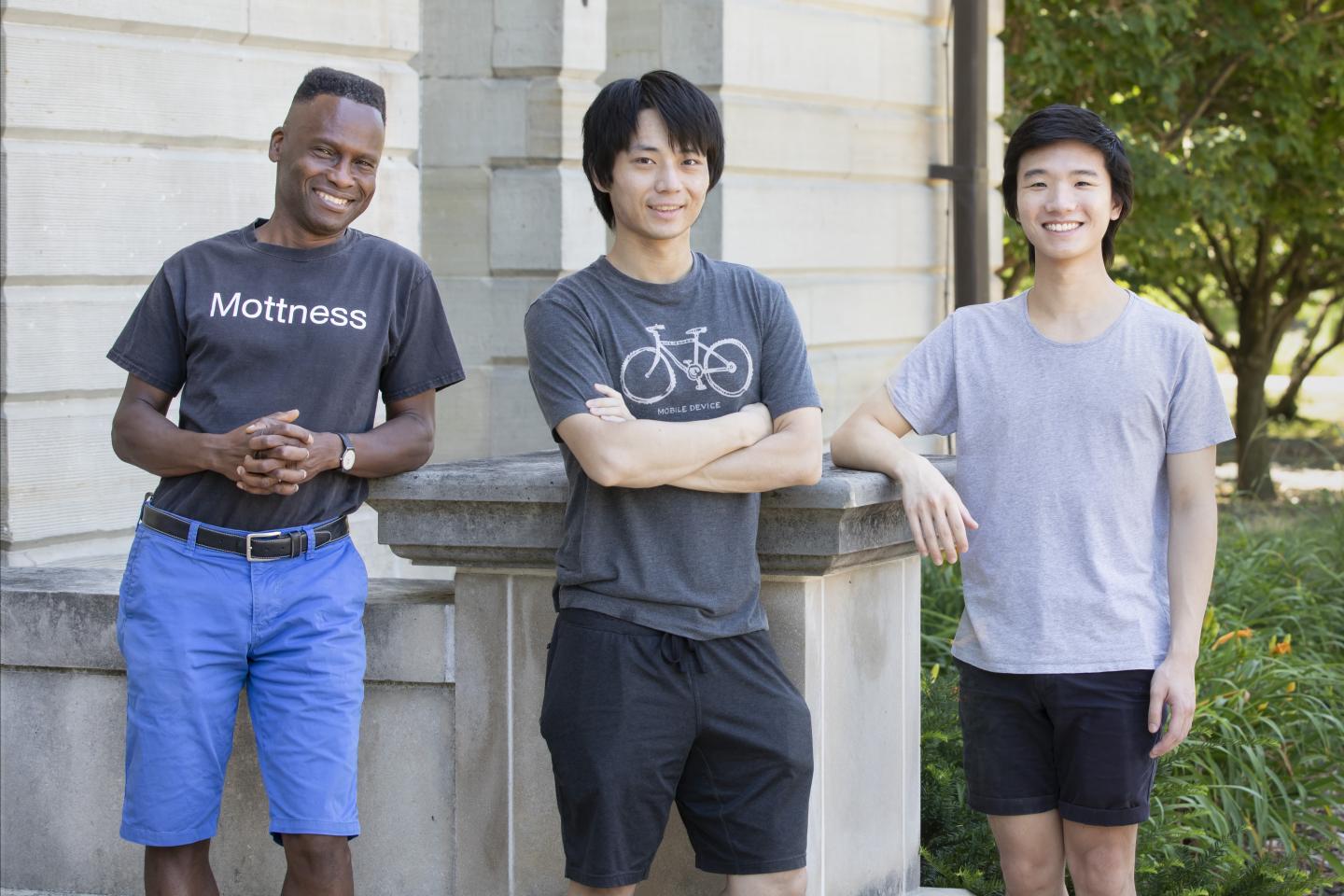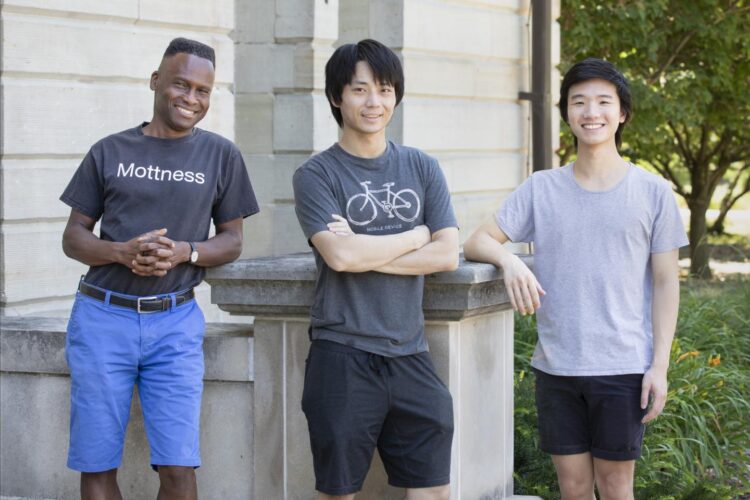Cooper pairing and wave function for superconducting state in doped Mott insulators

Credit: L. Brian Stauffer, University of Illinois at Urbana-Champaign
Urbana, IL–Forty-five years after superconductivity was first discovered in metals, the physics giving rise to it was finally explained in 1957 at the University of Illinois at Urbana-Champaign, in the Bardeen-Cooper-Schrieffer (BCS) theory of superconductivity.
Thirty years after that benchmark achievement, a new mystery confronted condensed matter physicists: the discovery in 1987 of copper-oxide or high-temperature superconductors. Now commonly known as the cuprates, this new class of materials demonstrated physics that fell squarely outside of BCS theory. The cuprates are insulators at room temperature, but transition to a superconducting phase at a much higher critical temperature than traditional BCS superconductors. (The cuprates’ critical temperature can be as high as 170 Kelvin–that’s -153.67?F–as opposed to the much lower critical temperature of 4 Kelvin–or -452.47?F–for mercury, a BCS superconductor.)
The discovery of high-temperature superconductors, now more than 30 years ago, seemed to promise that a host of new technologies were on the horizon. After all, the cuprates’ superconducting phase can be reached using liquid nitrogen as a coolant, instead of the far costlier and rare liquid helium required to cool BCS superconductors. But until the unusual and unexpected superconducting behavior of these insulators can be theoretically explained, that promise remains largely unfulfilled.
An outpouring of both experimental and theoretical physics research has sought to uncover a satisfactory explanation for superconductivity in the cuprates. But today, this remains perhaps the most pressing unsolved question in condensed matter physics.
Now a team of theoretical physicists at the Institute for Condensed Matter Theory (ICMT) in the Department of Physics at the University of Illinois at Urbana-Champaign, led by Illinois Physics Professor Philip Phillips, has for the first time exactly solved a representative model of the cuprate problem, the 1992 Hatsugai-Kohmoto (HK) model of a doped Mott insulator.
The team has published its findings online in the journal Nature Physics on July 27, 2020.
“Aside from the obvious difference in superconducting temperatures, the cuprates start off their lives as Mott insulators, in which the electrons do not move independently as in a metal, but rather are strongly interacting,” explains Phillips. “It is the strong interactions that make them insulate so well.”
In their research, Phillips’ team solves exactly the analog of the “Cooper pairing” problem from BCS theory, but now for a doped Mott insulator.
What is “Cooper pairing”? Leon Cooper demonstrated this key element of BCS theory: the normal state of a traditional superconducting metal is unstable to an attractive interaction between pairs of electrons. At a BCS superconductor’s critical temperature, Cooper pairs of electrons travel without resistance through the metal–this is superconductivity!
“This is the first paper to show exactly that a Cooper instability exists in even a toy model of a doped Mott insulator,” notes Phillips. “From this we show that superconductivity exists and that the properties differ drastically from the standard BCS theory. This problem had proven so difficult, only numerical or suggestive phenomenology was possible before our work.”
Phillips credits ICMT post-doctoral Fellow Edwin Huang with writing the analogue of the BCS wave function for the superconducting state, for the Mott problem.
“The wave function is the key thing that you have to have to say a problem is solved,” Phillips says. “John Robert Schrieffer’s wave function turned out to be the computational workhorse of the whole BCS theory. All the calculations were done with it. For interacting electron problems, it is notoriously difficult to write a wave function. In fact, so far only two wave functions have been computed that describe interacting states of matter, one by Robert Laughlin in the fractional quantum Hall effect, and the other by Schrieffer in the context of BCS theory. So the fact that Edwin was able to do this for this problem is quite a feat.”
Asked why the cuprates have proven such a mystery to physicists, Phillips explains, “In fact, it is the strong interactions in the Mott state that has prevented a solution to the problem of superconductivity in the cuprates. It has been difficult even to demonstrate the analogue of Cooper’s pairing problem in any model of a doped Mott insulator.”
Huang’s Mott insulator wave function further enabled Phillips, Huang, and physics graduate student Luke Yeo to solve a key experimental puzzle in the cuprates, known as “the color change.” Unlike metals, the cuprates exhibit an enhanced absorption of radiation at low energies with a concomitant decrease in absorption at high energies. Phillips’ team has shown that this behavior arises from the remnants of what Phillips calls “Mott physics” or “Mottness” in the superconducting state.
Mottness is a term coined by Phillips to encapsulate certain collective properties of Mott insulators, first predicted shortly after World War II by British physicist and Nobel laureate Nevill Francis Mott.
In addition, the researchers have shown that the superfluid density, which has been observed to be suppressed in the cuprates relative to its value in metals, is also a direct consequence of the material’s Mottness.
Further, Phillips’ team has gone beyond the Cooper problem to demonstrate that the model has superconducting properties that lie outside that of BCS theory.
“For example,” Phillips explains, “the ratio of the transition temperature to the energy gap in the superconducting state vastly exceeds that in the BCS theory. In addition, our work shows that the elementary excitations in the superconducting state also lie outside the BCS paradigm as they arise from the wide range of energy scales intrinsic to the Mott state.”
###
This research was funded by the National Science Foundation’s Division of Materials Research and by the Gordon and Betty Moore Foundation’s Emergent Phenomena in Quantum Systems (EPiQS) Initiative. The findings presented are those of the researchers, and not necessarily those of the funding agencies.
Media Contact
Siv Schwink
[email protected]
Original Source
https:/
Related Journal Article
http://dx.





